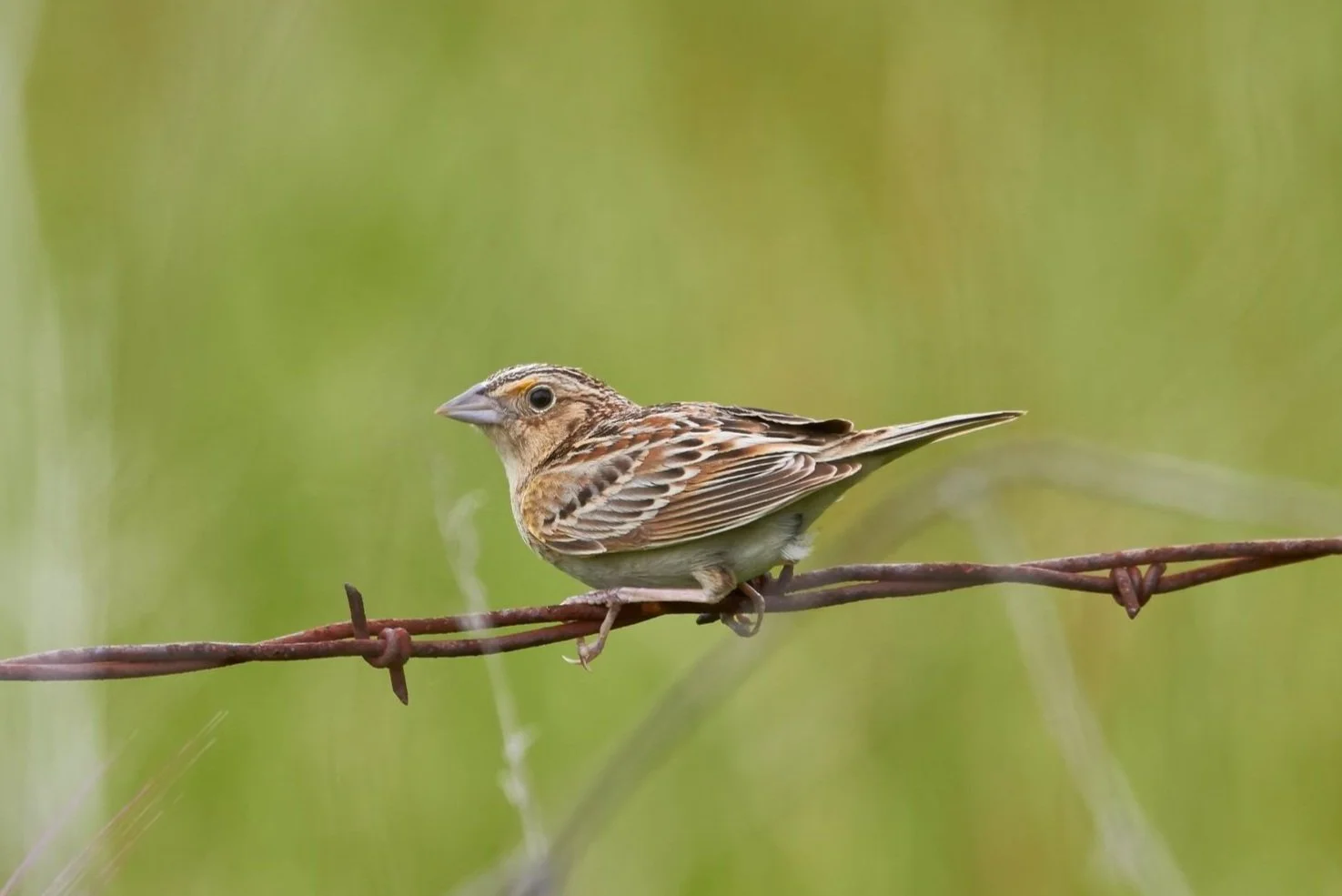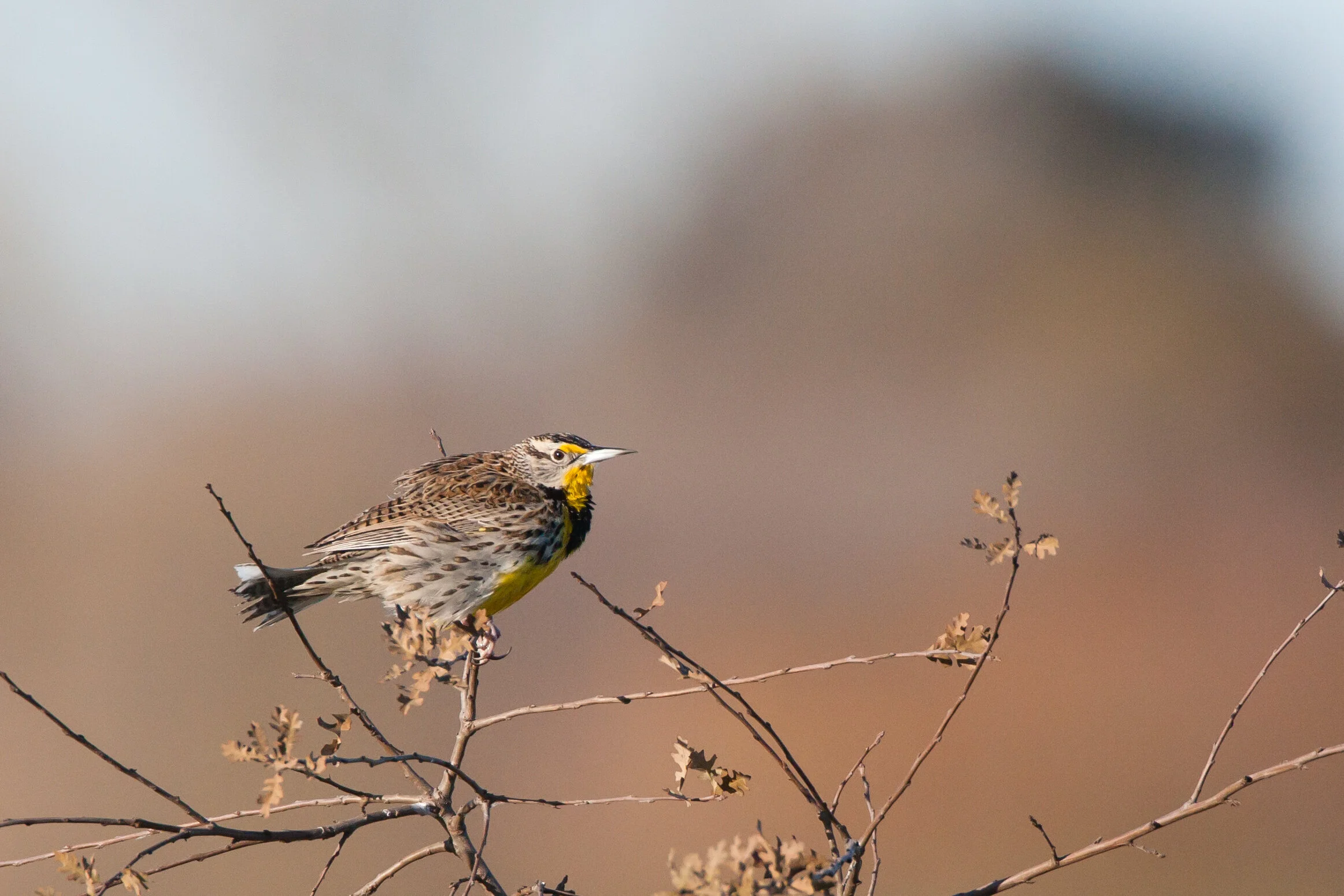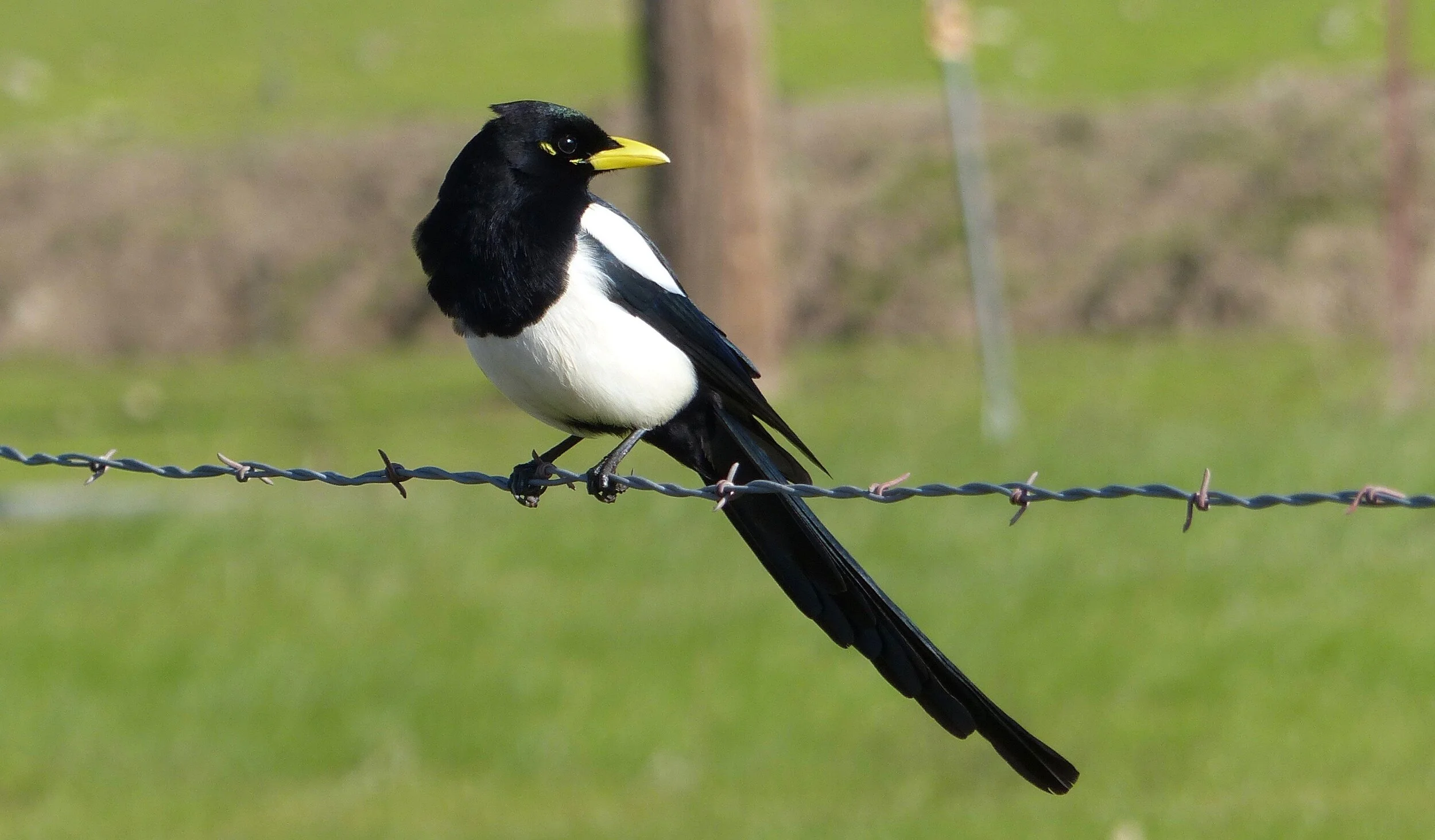The Spring Valley Area at Ed Levin Park on the east side of San Jose in the Diablo Foothills offers one of the best places in Santa Clara County to observe migratory hummingbirds in spring. Enjoy an easy walk around the Spring Valley Pond and spend some time at the “Magic Tree” watching the hummingbirds come and go, or take the more challenging Spring Valley Trail for a walk in the grassy hills and surrounding woodlands.
Stile Ranch Trail in Santa Teresa County Park (Spring): A Short Climb for Chaparral and Grassland Birds
During spring along the Stile Ranch Trail, located in Almaden Valley, you’ll find species of birds that aren’t widely found in other areas of Santa Clara County such as Horned Lark and Grasshopper Sparrow, as well as a variety of wildflowers. As you ascend the trail up the south-facing hill you’ll get great views of the hills of Santa Teresa, Almaden Valley, and of Mount Umunhum and the Santa Cruz Mountains.
Coyote Lake (Winter): A Winter Stop for Waterfowl and Much More
Whether you want a relaxing lakeside drive with easy bird watching, or a vigorous hike through the rolling hills, Coyote Lake in Gilroy is a prime attraction for birdwatchers. Beautiful scenery is the backdrop to lots of overwintering waterfowl and wild animals like deer, wild boar, Wild Turkey and California Quail that are habituated to people. Come for the Bald Eagles and courting Western and Clark’s Grebes and you will find so much more.
Byxbee Park and Palo Alto Regional Water Quality Control Plant (Winter): Waterfowl and Migrant Birding at an Artsy Palo Alto Baylands Preserve
Byxbee Park, in the Palo Alto Baylands Nature Reserve, features a hill with a 360-degree vista, grasslands studded with conceptual art, marshy sloughs, a creek and tree-lined paths, throughout which you can find wintering waterfowl, migrating passerines, soaring raptors and a variety of gulls.
Stevens Creek County Park (Fall/Winter): The Early Bird Catches the Worm, Acorn, and Toyon Berry!
If Stevens Creek County Park were to have a bird mascot, it would have to be the Acorn Woodpecker. Like the first peoples who inhabited these foothills, the Ohlone, the Acorn Woodpecker makes good use of the plentiful acorns from the Coast Live Oaks. Along with the Acorn Woodpecker, the fall and winter seasons bring even more bird species to be discovered in this Cupertino hills park.
Foothills Nature Preserve in Palo Alto (Year-round)
A lake for winter ducks and summer swallows, a panoramic vista for soaring hawks and cruising vultures, redwoods and oaks for woodpeckers, juncos, and bluebirds, and chaparral for towhees, wrens and jays! Foothills Nature Preserve in Palo Alto, newly opened to the public, has it all, all year round for everyone!
Stevens Creek County Park (Spring/Summer): A Morning Drive-and-Bird
Just a short hop off Highway 280 in Cupertino brings you to this, our very first Santa Clara County park. Drive through lower Stevens Creek Canyon, stopping to bird at parking spots and picnic areas. Shady creeksides, a reservoir to scan, and oak and chaparral hillsides are alive with resident and migrant birds. The secret to finding them is to come early to beat the heat and crowds. And don’t forget your picnic lunch!
Calero Reservoir (Late Spring): Families of Western and Clark’s Grebes with Chicks
May to June, Western and Clark’s Grebes are taking care of their downy young. You can see babies on their parents’ backs as well as juveniles on their own in the water near their parents. Calero Reservoir in San José south of Almaden Valley can be a fairly easy place to watch them.
Santa Teresa County Park - Pueblo Day Use Area (Spring)
This small section of Santa Teresa County Park, located in San José, offers a variety of habitats including oak woodland, grassland, sage scrub, chaparral, riparian, and freshwater seeps, attracting a larger variety of birds than would a single habitat. My favorite of these birds arrives in the second half of April: the Lazuli Bunting, whose song is a complex series of jumbling notes. I get goosebumps when I hear the first bird of the season singing his song.
Skyline Blvd (Spring) : Birding at the Top of the Santa Cruz Mountains
Skyline Boulevard runs at the top of the Santa Cruz Mountains. This higher elevation area is home to a variety of birds which are harder to find in other parts of the county. This guide covers 3 stops along Skyline Blvd which can be visited by car and with a minimal amount of walking.
Hunting Hollow at Henry Coe (Spring): A Nature Lover’s Paradise
Hunting Hollow is nature lover’s paradise. Located in the South County east of Morgan Hill, it is a perfect place to bird without the crowds. Even if the parking lot looks full, trail conditions should still be peaceful. The broad trail takes you along a riparian corridor among oak woodlands and meadows, complete with stream crossing and vernal pools. The route covered here ends at a pond that occasionally has Wood Ducks and other surprises.
Calero Reservoir (Late Winter/Early Spring): Dancing Western and Clark’s Grebes
January through March, Western and Clark’s Grebes are performing their spectacular courtship displays. Calero Reservoir in San José south of Almaden Valley can be a fairly easy place to watch them.
Rancho San Vicente (Fall/Winter): Rockin’ the Rock Wren
This fall and winter, visit the grassy hillsides of the Rancho San Vicente entrance to Calero County Park in San José. Enjoy the wide open skies and beautiful views while looking for raptors and Rock Wrens.
Sierra Vista OSP (Fall/Winter)
Sierra Vista OSP is in the eastern foothills of Santa Clara County. It is a good location to visit year-round, but especially in the winter when grassland loving sparrows and Ferruginous Hawk may be present. There are few crowds in the early morning and weekdays and the views are fantastic.
Coyote Lake (Fall/Winter): Mendoza Ranch Area
Coyote Lake County Park is a wonderfully diverse park in the South County. We’ll travel the out-and-back spur to Roop Pond, and the hiking-only Rancho La Polka Loop trail, both of which are lightly traveled, affording more opportunity for solitude with the birds! With a small pond, oak woodland, and oak savannah transitioning into grassland, this can be an excellent area for all of the typical oak woodland birds and overwintering raptors.
Coyote Valley Open Space Preserve (Fall/Winter)
No matter the season, Coyote Valley Open Space Preserve (CVOSP) in Morgan Hill is a great place to discover local favorites or special migrants. In fall and winter, this preserve is a perfect spot to watch for resident and migrating raptors, wintering sparrows, and agricultural-field specialties.

















